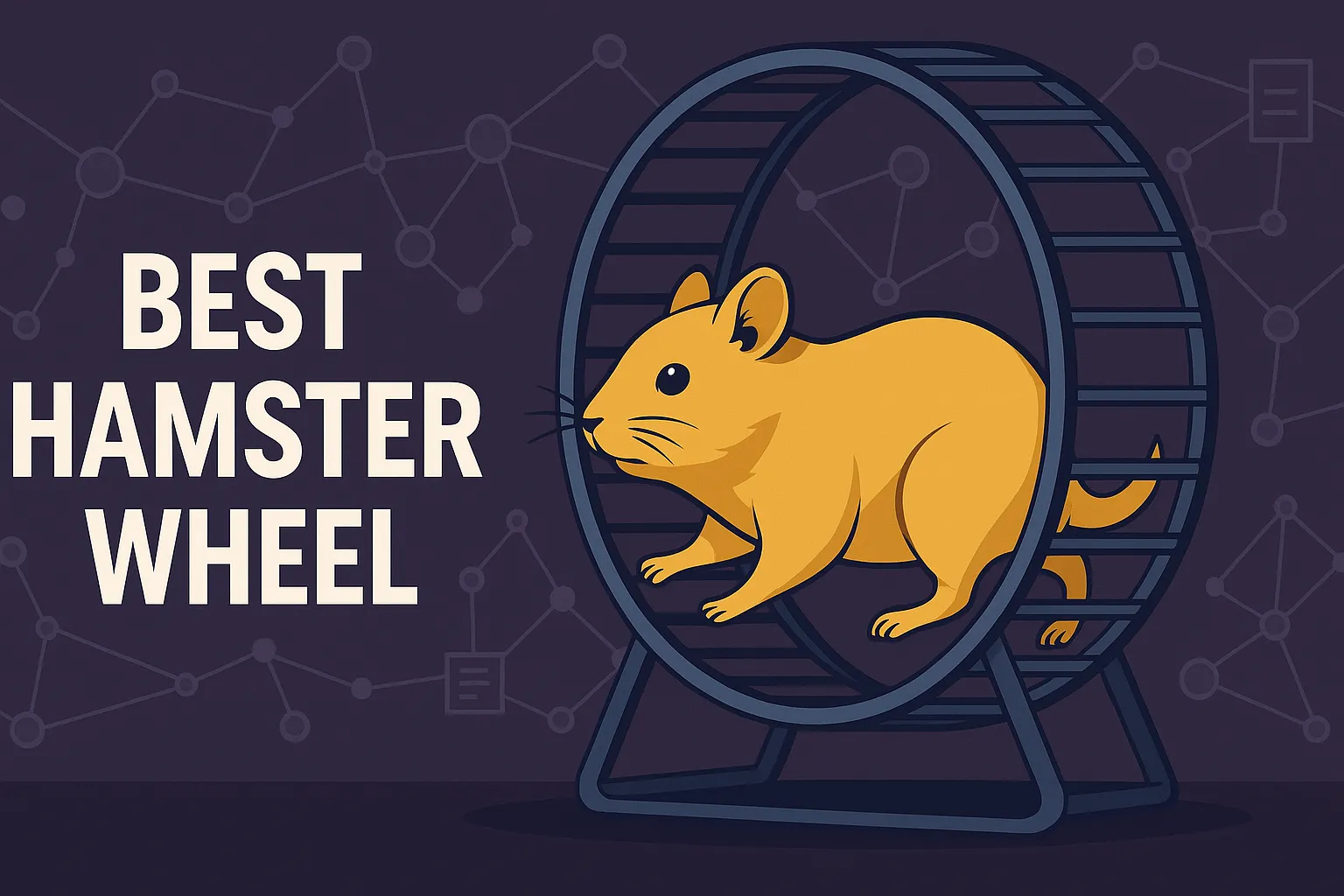Best Hamster Wheel in Crypto: Break the Yield Loop
Best Hamster Wheel: Freeing Yourself from the Crypto Slog
In Web3, “best hamster wheel” isn’t a game—it’s a metaphor for loops crypto builders, traders, and users find themselves stuck in. From yield loop burnout to infinite liquidity bonuses, the space is overrun by protocols that excel at capital and attention grabbing but fail to deliver helpful exit ramps. This piece takes apart how crypto-native hamster wheels are built—and how to break out.
Table of Contents
- Protocol Loops That Never End
- The Grind Economy in Web3
- Unwinding the Yield Machine
- Designing for Off-Ramps
- When Liquidity Becomes a Trap
- Final Take: Exit Isn’t Optional
Protocol Loops That Never End
Reward-shifting yield farms. Tokens that must be staked in order to access utility. DAO governance that must remain active at all times in order to maintain voting rights. These are all instances of Web3 hamster wheels—protocols that are optimized for user retention with no end in sight.
Case: Curve Finance uses vote-locking (veCRV) to encourage long-term engagement, but users are left with recursive decisions: stake more to preserve voting weight, or get diluted. Feedback loop increases protocol “stickiness” at the cost of user fatigue.
| Protocol | Loop Mechanic | Exit Friction |
|---|---|---|
| Curve | veToken locking for voting rights | High (time-locked) |
| OlympusDAO | Rebasing with protocol-owned liquidity | High (token devaluation) |
| Sushi | Emission-based farming | Medium (reward decay) |
The Grind Economy in Web3
Web3’s “grind economy” is less about exchange and more about the psychological feedback loops that ensnare users. Token inflation, governance engagement, and staking compulsion all fuel a system that rewards presence over progress.
During DeFi summer of 2020, traders hop-protocled to protocol pursuing APRs of over 1,000%. Ultimately, however, this was a behavioral treadmill. The returns curve flattened, but the grind continued.
- Constructors sense pressure to drop weekly in an effort to keep the community active.
- DAOs make contributors “stay active” or else get rotated out of positions.
- Traders re-fund losing trades not for profit—but so that they don’t miss the next pump.
This is the hamster wheel. And it’s not purely financial—it’s psychological.
Unwinding the Yield Machine
The best hamster wheel isn’t one that compels you to run—it’s one that builds an exit ramp. And that’s where on-chain automation tools enter the picture.
Real Tools to Automate Exit Logic
| Tool | Function | Use Case |
|---|---|---|
| Gelato | Smart contract automation | Auto-withdraw when APR drops |
| Keep3r | Decentralized job coordination | Trigger LP rebalancing |
| Yearn Vaults | Yield aggregation | Optimize farming paths |
These tools offer an antidote, at least partially: reduce the necessity of endless checking, flipping, and grinding by scripting off conditions into the chain itself.
Designing for Off-Ramps
Protocols rarely incentivize users to leave. But clever UX teams are flipping that on its head. Well-crafted off-ramp earns long-term trust, re-engagement, and reduced churn rates.
Case: Sommelier Finance vaults have pre-determined parameters—when a vault hits stop-loss or underperforms, users are automatically withdrawn.
Compare that to passive LPs on Uniswap, waiting around in pools with negative returns via impermanent loss, blissfully ignorant until too late.
Off-Ramp UX Patterns:
- Timed-based withdrawal triggers
- Performance ceilings and floors
- Token unlock alternatives (e.g., vested buybacks)
Creating off-ramps is not something that can be done—it’s an ethical necessity in protocol UX.
When Liquidity Becomes a Trap
Not all liquidity is good liquidity. Some protocols abuse emissions, lockups, and bonding to front-run depth and trap users in loops they can’t leave.
Example: “staking → lock → vote → restake” loop protocols hold wallets hostage with little value added to induce real usage.
This fallacy is compounded when token price decreases but protocol continues to bait with native emissions. Double down by the users to save, further into the loop.
Warning Signs of a Liquidity Trap:
- Reward is exclusively in home token
- Long lockups on governance rights
- Cliff-diving APYs on onboarding
The biggest hamster wheel is not where you’re headed—it’s about moving quickly with purpose. If the wheel is spinning and you’re going nowhere fast, it’s time to get out.
Final Take: Exit Isn’t Optional
Crypto is not short on ways to keep you in motion—it’s short on ways to reward good disengagement. If you’re just constantly toggling between LPs, voting cycles, or token emissions just to stay “active,” you’re not earning yield—you’re wasting time.
The best hamster wheel isn’t the quickest one. It’s the one where you can get off without penalty.
Next Step: Look at your current on-chain tactics. Are you driving—or are you just another wallet keeping the wheel spinning?
FAQs
What is “best hamster wheel” in Web3?
It’s a metaphor for loops that trap users in endless on-chain activity with no real exit—like staking, farming, and governance loops.
How do I escape the DeFi yield loop?
Utilize smart automation tools (like Gelato or Yearn) with exit logic, monitor yield decay, and avoid protocols that require constant human intervention.
Are lock-ins in protocols always bad?
No. But if a protocol lacks a clear exit, reducing rewards, and imposes penalties for not participating, then it is a red flag.
What are some liquidity traps?
Protocols with long lockups, native-only emissions, or staking mechanics with a familiar rhythm that seek to lock users in without offering value.
likecopy
➔ Post created by Robert AI Team




